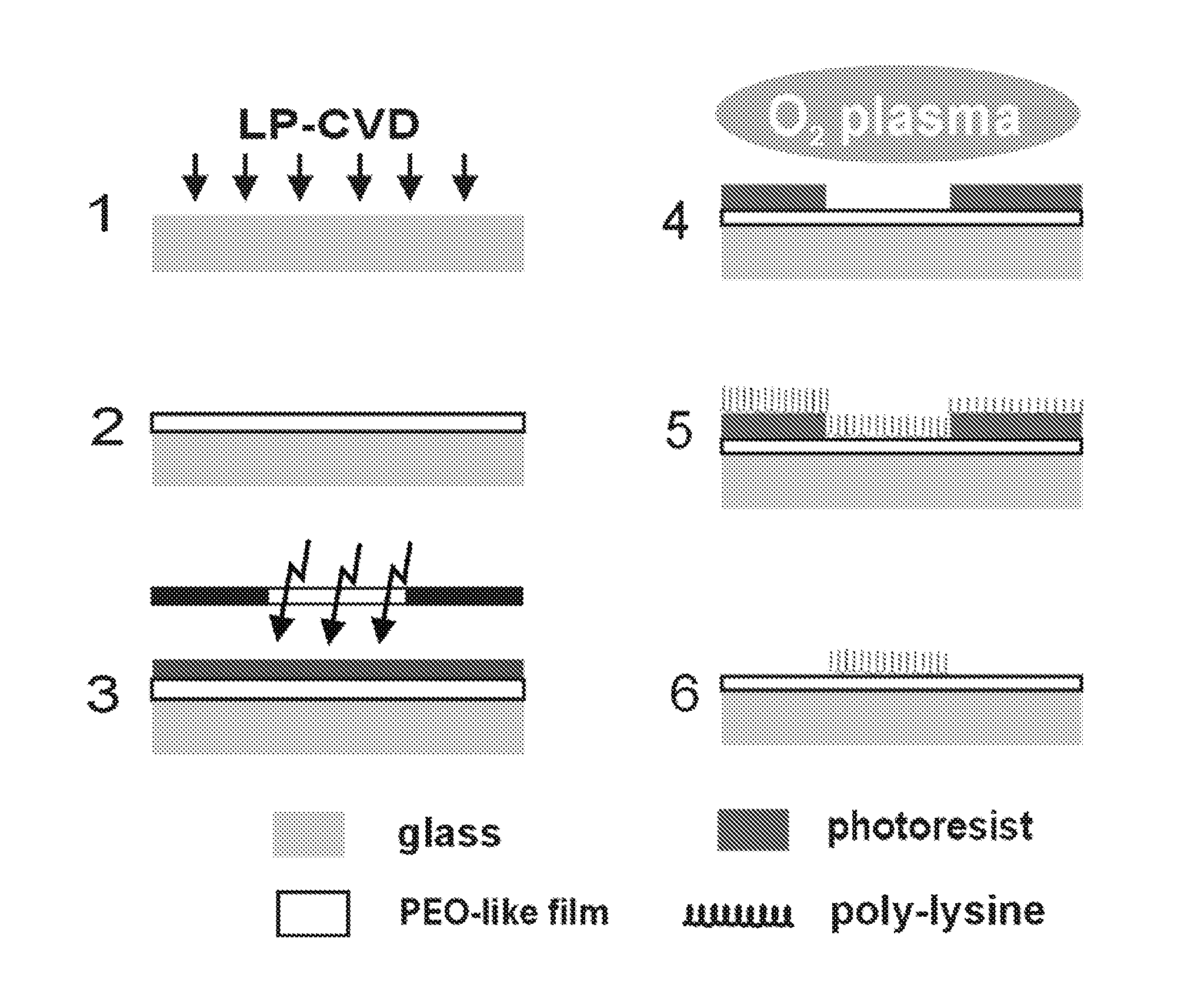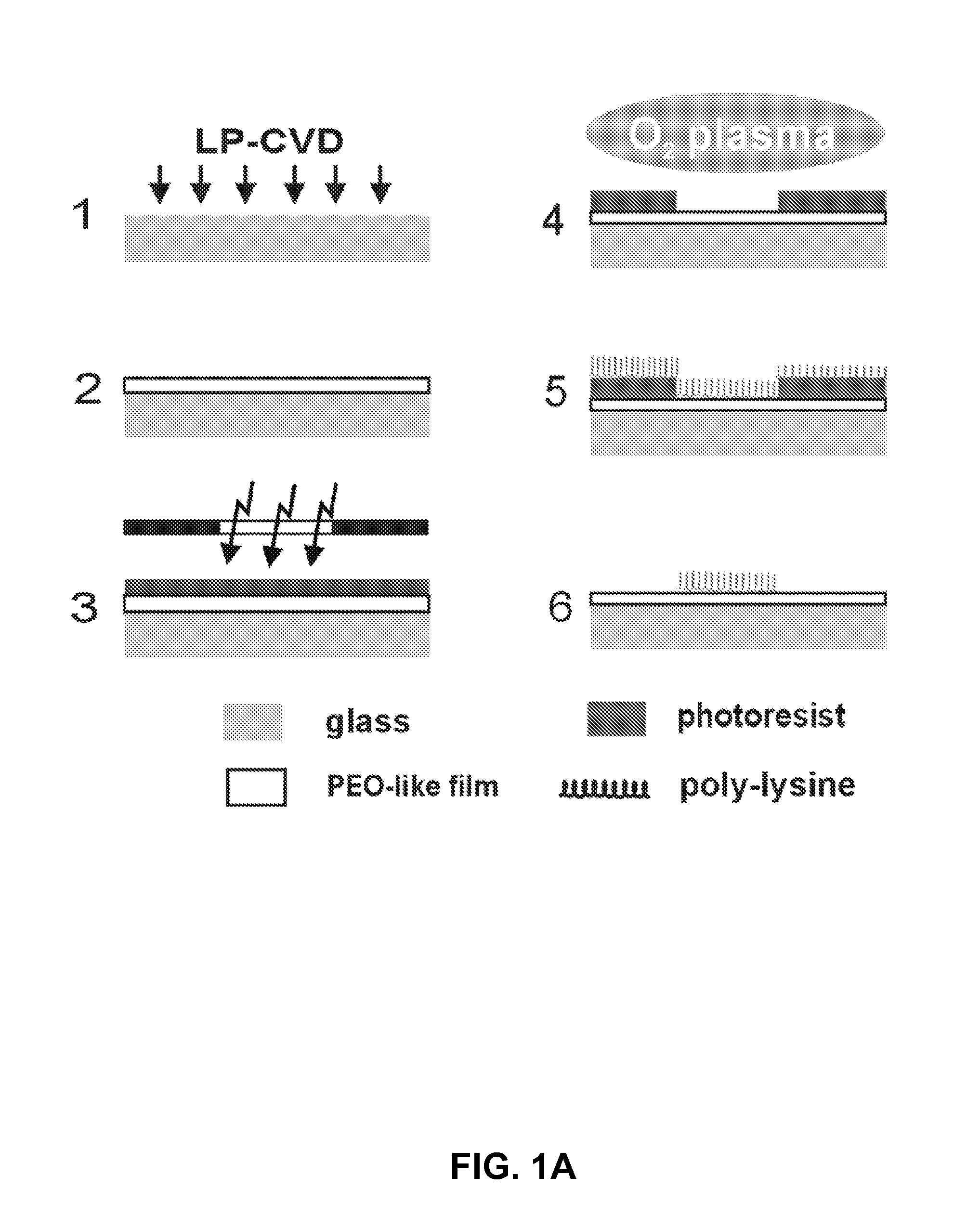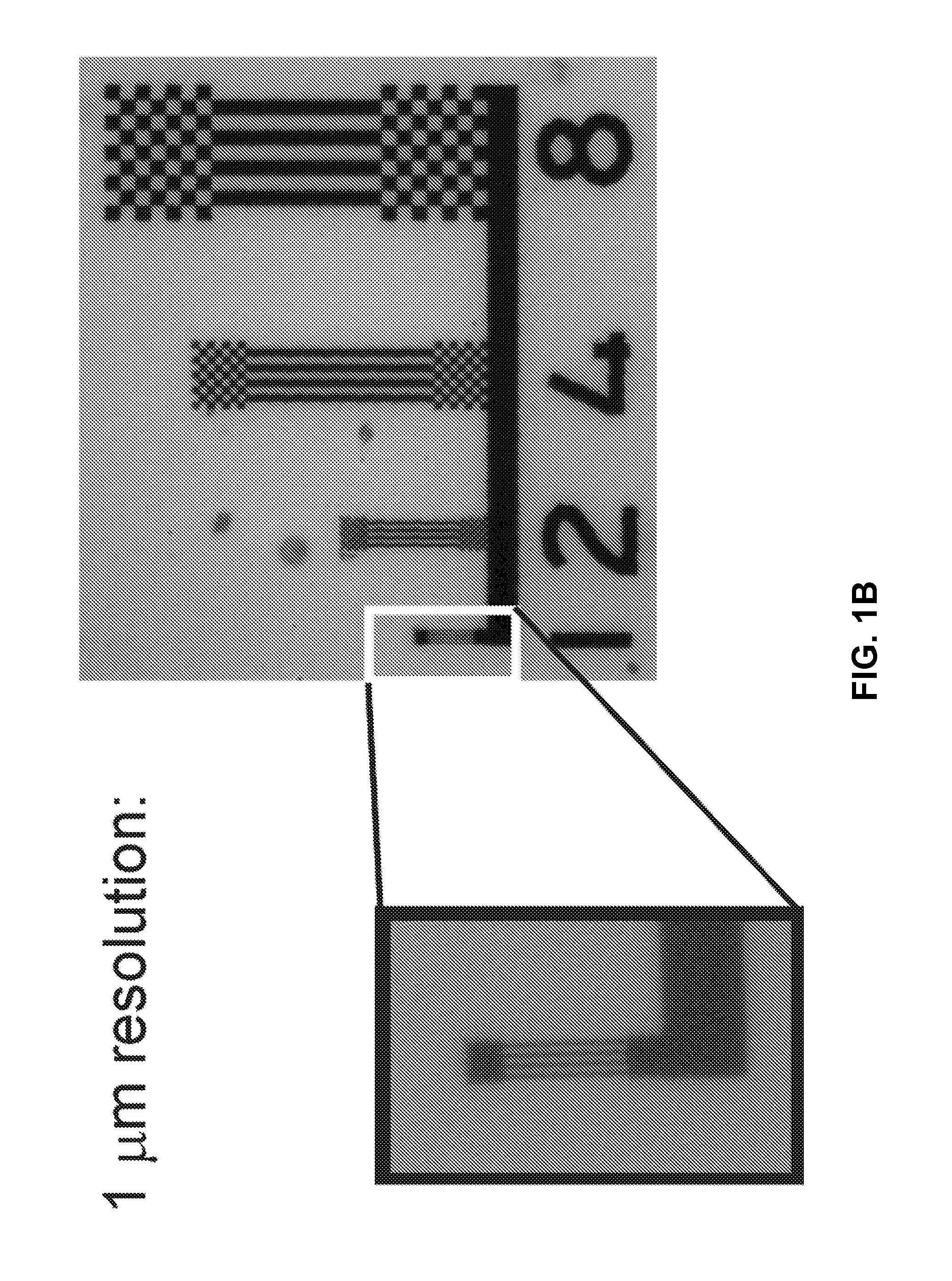Methods and Compositions for High-Resolution Micropatterning for Cell Culture
- Summary
- Abstract
- Description
- Claims
- Application Information
AI Technical Summary
Benefits of technology
Problems solved by technology
Method used
Image
Examples
example 1
Process Overview
[0072]This example provides an overview of a process for creating used to create poly-lysine micropatterns on the surface of a glass substrate. The glass substrate (usually a 4″ Pyrex wafer (Pyrex 7740, double-side polished, University Wafer, Boston, Mass.) was positioned on the lower, ground electrode of a parallel plate plasma system. As diagrammed in FIG. 1A(1), process gas, comprising 20% vapors of diglycol methyl ether (CAS#111-96-6, J. T. Baker, Phillipsburg, N.J.)] (“diglyme”) in argon (Ar) was introduced into the chamber at a total pressure of ˜20 mT. An RF generator (Plasma-Therm PK-12, Plasmatherm LLC, St. Petersburg, Fla.) was used to induce a plasma using a power of approximately 1-2 W. Under these conditions, the diglyme molecules polymerized to form a PEO-like, solid material that deposited uniformly on the glass substrate as shown in FIG. 1A(2). The substrate, after being blanketed with the PEO-like film then underwent standard photolithography. Photor...
example 2
[0074]Oxygen plasma. Pyrex samples with deposited film were treated with oxygen plasma using a March Plasmod plasma system (March Plasma System, Concord, Calif.). Surfaces were treated at 25° C. with 20 W of oxygen plasma for 15 sec. at ˜1.3 T. The duration of the oxygen plasma was limited to avoid eroding the photoresist and distorting the lithographic pattern.
example 3
[0075]Contact angle. The wetability of water on the PEO-like film was measured using a Kruss Contact Angle Measuring System (Kruss GmbH, Hamburg, Germany). Contact angles were determined from magnified images of sessile drops of ˜10 μL deposited on the film surface with a miniature syringe. Numerous drops were measured for each sample, and data represent an average of at least 10 measurements.
PUM
| Property | Measurement | Unit |
|---|---|---|
| Temperature | aaaaa | aaaaa |
| Temperature | aaaaa | aaaaa |
| Length | aaaaa | aaaaa |
Abstract
Description
Claims
Application Information
 Login to View More
Login to View More - R&D
- Intellectual Property
- Life Sciences
- Materials
- Tech Scout
- Unparalleled Data Quality
- Higher Quality Content
- 60% Fewer Hallucinations
Browse by: Latest US Patents, China's latest patents, Technical Efficacy Thesaurus, Application Domain, Technology Topic, Popular Technical Reports.
© 2025 PatSnap. All rights reserved.Legal|Privacy policy|Modern Slavery Act Transparency Statement|Sitemap|About US| Contact US: help@patsnap.com



